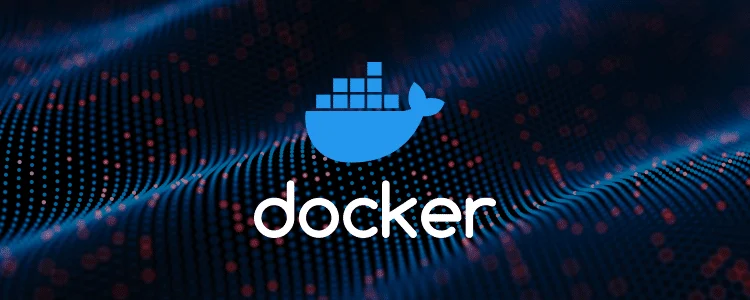Docker and Kubernetes have become household names in software engineering and information technology. These two technological giants continue to transform application-building processes as they enhance speed, efficiency, and reliability, among many other benefits.
Docker allows us to package and containerize our applications into smaller components, while Kubernetes steps up the whole process by offering advanced orchestration capabilities focusing solely on containerized applications’ management. Despite overlapping features, both tools differ significantly in their roles, from benefits to architecture design.
In this article, we will discuss the differences between Docker and Kubernetes. By delving into this article on the main distinctions between them, you’ll hopefully establish whether Docker or Kubernetes aligns with your necessities best.

What is Docker?
Docker is a software platform that allows you to build, test, and deploy applications faster. It can be used for running containers on any PC or server. Docker organizes software into systematic units called containers that comprise all of the components necessary for the software to function, including libraries, system tools, code, and runtime.
Docker enhances productivity since it allows programmers to package their programs and dependencies into a portable container. Creating such containers means they can travel seamlessly between operating systems avoiding common compatibility-related problems.
Ultimately, this results in standardized environments for each programmer regardless of the distinct platforms they might use. If developers develop applications in containers on their computers, they need not stress over discrepancies that arise from fundamental features like the operating system or other dependencies. This way, they can easily deploy their application onto a server.
Features of Docker
Some of the features of Docker include:
- Service-Oriented Architecture: According to Docker, each container should only run one application or activity at a time. This makes distribution, scaling, debugging, and examination of your apps much easier.
- Isolation and security: With Docker’s Security Management, secrets are kept within the swarm for better protection. The containers in Docker provide isolation between various applications, avoiding interference and ensuring stability.
- Scalability: Docker containers can be easily generated, and it is possible to manage multiple containers simultaneously and effectively. Also, Docker’s portability allows for flexible management of workloads by adjusting the size of apps and services to meet business needs in almost real-time.
- Image management: Docker’s images make storing program files and dependencies possible. Updating containers or creating new ones can be achieved using images created with this application.
- Volume management: Docker is handy for apps that need data storage as it offers a volume management system. With this, developers can save the data that came from containers.

Practical Use Cases of Docker
Deploying Software
All-inclusive packaging of configurations and dependencies offered by Docker containers presents several benefits in regard to deploying applications. This helps with easy deployment and transfer of applications without spending time configuring host servers. Leveraging this requires that Docker is installed on the server or PC.
Running Lightweight Linux Distros
While Docker containers share some similarities with virtual machines, they are, in fact, much more lightweight. This feature enables the use of Linux Docker images in place of a full-blown virtual machine for most purposes.
The Linux docker images have only the basic requirements of the operating system; for example, the Alpine Linux image is about 3MB big. Docker containers allow users to install software and input customizations similar to what can be done on any Linux server.
Hosting Servers
The strength of Docker containers lies in their ability to be used for various applications while remaining incredibly lightweight. This includes supporting server utilities like web and file servers through containerization.
Another common use case is creating a reverse proxy server using Nginx docker containers. Furthermore, VPNs can also be created by utilizing Docker containers, allowing for secure device access from anywhere through encrypted transmission.
Creating Development Environments
Some complex development environments demand a lot of dependencies and configuration. Using Docker, you can quickly share them with your project team by bundling them into a single image. Also, Docker can be used to imitate or run different software environments. This helps you save time by avoiding the need to set up the software and other customizations.

What is Kubernetes?
Management and scaling of applications comprising several containers often represent a significant challenge. With Kubernetes, scaling and management of applications become easier.
Kubernetes, also referred to as K8s, is an open-source platform for managing, scaling and automating container deployment. Kubernetes is highly flexible, meaning it can work with any container runtime.
It is an effective tool for efficiently scaling containerized applications by automating specific critical tasks related to managing containers, such as load-balancing or self-healing configurations.
These containers typically package individual components of an application, such as code snippets and associated dependencies. For instance, if discrepancies occur within a container, it is Kubernetes’ responsibility to rectify this by promptly replacing them with functional ones. Or if a particular application experiences significant traffic influxes beyond its capacity to handle, Kubernetes undertakes measures to create and manage additional containers seamlessly.
Features of Kubernetes
- Resource management: Kubernetes ensures containers have access to the resources they require to function properly by optimizing resource usage.
- Container orchestration: The container orchestration capabilities offered by Kubernetes make it simple to scale and manage containers.
- Self-healing: In the event of a failure, Kubernetes can automatically identify and fix broken containers, ensuring that the application is still accessible.
- Deployment automation: With the help of Kubernetes’ robust deployment automation tools, developers can automate many of the processes involved in deploying applications.
- Load balancing: Load balancing is a feature that Kubernetes includes in its core that aids in distributing traffic among containers in order to improve performance.

Uses Cases of Kubernetes
Below, you can read some of the most compelling use cases for Kubernetes today.
Large-Scale App Deployment
Kubernetes supports numerous container runtimes, including Docker, containers, CRI-O, etc. They are designed to handle large apps using automation tools and a declarative setup method. Load balancing and features like horizontal pod scalability enable developers to build up the system with minimal downtime.
Managing Microservices
Kubernetes is the best solution for microservice-to-microservice communication between application components. It enables authentication, manages component behavior, and allocates resources among microservices in the case of failure.
CI/CD Software Development
An automated set of procedures for developing, testing, and deploying software is known as CI/CD (Continuous Integration – Continuous Delivery/Deployment). Configuring a Kubernetes CI/CD workflow allows using the platform’s features, including automation and effective resource management.
Hybrid and Multi-Cloud Deployments
With Kubernetes in hybrid and multi-cloud environments, developers can ensure application portability. The underlying infrastructure can be abstracted using Kubernetes notions like services, ingress controllers, and volumes.

Comparison table on Kubernetes vs. Docker
| Features | Docker | Kubernetes |
|---|---|---|
| Containerization | Packages applications and dependencies into containers | Orchestrates containers in a cluster |
| Image management | Provides a powerful image management system | Support container image from Docker swarm and other sources |
| Load balancing | Limited load-balancing capabilities | Provides built-in load balancing |
| Deployment automation | Limited deployment automation capabilities | Provides advanced deployment automation features |
| Resource management | Basic resource management capabilities | Provides advanced resource management and optimization |
| Self-healing | Limited self-healing capabilities | Can automatically detect and repair failed containers |
| Community support | Large and active community support | Large and active community support |
| Purpose | Containerization and packaging of applications | Orchestration and management of containers |
| Key Benefit | Portability and consistency across environments | Scalability and resilience |
| Primary Function | Builds, runs, and manages containers | Orchestration and management of containerized applications |
| Use case | Ideal for small to medium-scale applications | Ideal for large-scale and complex applications |
| Deployment | Suitable for standalone deployment or with other tools | Requires deployment on a cluster of machines |
| Architecture | Single-host architecture | Multi-host and distributed architecture |
| Learning curve | Relatively easy to learn and use | Steep learning curve |
Conclusion
Enhancing efficiency in developing, testing, and deploying applications calls for powerful tools like Docker or Kubernetes. These tools differ in architectural design and capabilities. Docker works great with containerization, whereas Kubernetes excels at advanced orchestration management of containerized apps.
Docker is best used for small to medium-scale applications, while Kubernetes is best used for advanced and large-scale applications that require extensive container management. Taking note of differences like this is essential before selecting one tool over the other. Your decision depends entirely on which tool best matches your application requirements, available resources, and expertise level.

No comments:
Post a Comment